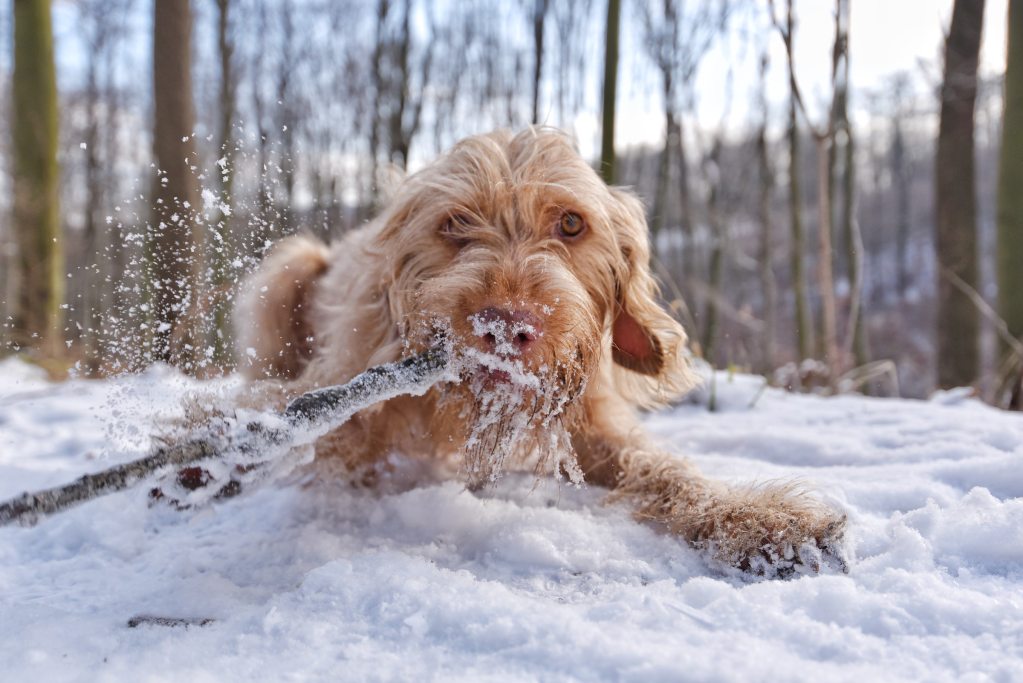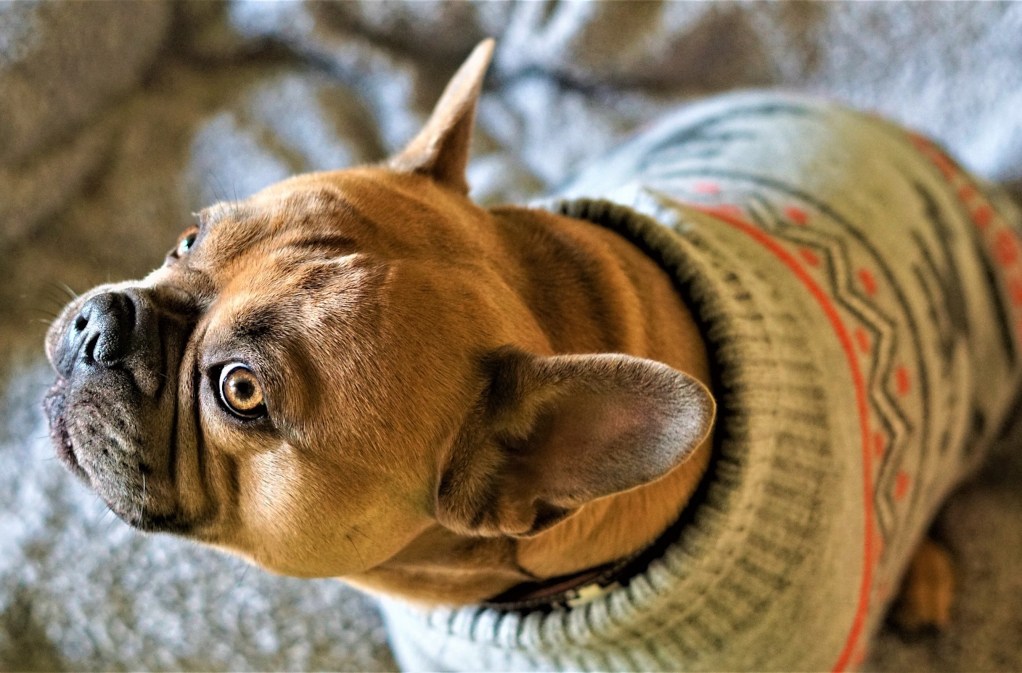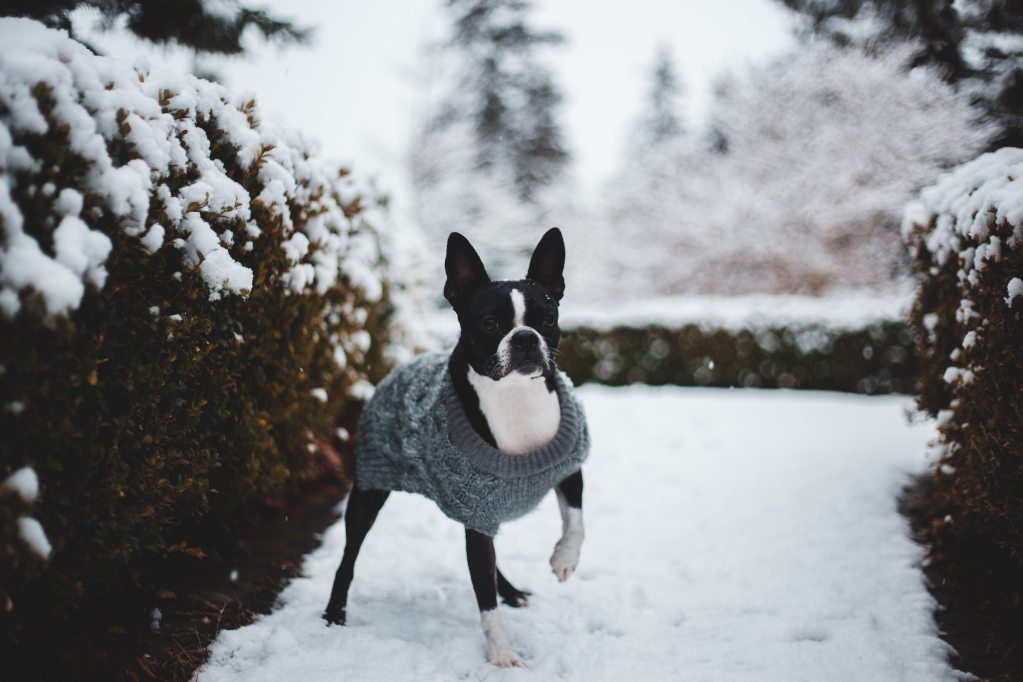Playing in the snow might seem like a dream come true, but there’s a lot you need to do to keep everyone safe and healthy in the winter. Insulated coats are just the beginning! There are countless ways to protect your dog from hazards like frostbite, but there are also hidden dangers for dogs in snow, ice, or freezing conditions.
Before you start your frantic Google searching, though, we’ve asked several of the pet care industry’s leading experts what they wish owners knew about keeping dogs safe in winter. You might be surprised by what they had to say! Luckily, even the most unexpected winter challenges have easy solutions, and we have them all listed for you here.

There is no ‘one size fits all’ when it comes to cold-weather gear for dogs
As cute as your dog might look in a winter coat, not all pups need one. According to Thomas Bohne, founder of the pit bull advocacy Kennel to Couch, “the necessity of winter apparel for dogs depends on several factors.”
These factors include:
- The climate where you live
- Your dog’s coat/fur type and length
- Your dog’s age and general health
While there are many ways to determine if your dog needs a sweater this winter, it can help to pay attention to the way your furry friend acts when temperatures dip lower. If they look uncomfortable — they probably are! As Bohne reminded us, “dogs shiver when they’re cold, just like humans.”
Introduce dog winter clothes gradually
Some pups take to new clothes instantly, while others have some warming up to do (literally). Rebarkable founder Ali Smith recommends introducing new coats and shoes gradually before wearing them out and about. This should help desensitize your buddy enough for them to get used to their new winter weather gear.

Coats for dogs are great, but paw protection is key for outdoor walks
Whether or not your dog needs a winter coat, you’ll want to consider some extra paw protection before going outside. The cold, icy ground can do more damage than you think.
Leigh Siegfried, the CEO and founder of Opportunity Barks Dog Training, recommends “checking paws for cracks or matted fur” on a regular basis, especially after walks. You might consider investing in some paw wax for soothing irritated paw pads, too.
Paola Cuevas, a Veterinary consultant at PetKeen, tells PawTracks “the salt used to melt snow and ice can cause skin irritation to your dog on contact and intoxication if ingested,” so you’ll want to look for a kind that’s safe for use around animals.
Alternatively, Cuevas recommends “using dog booties to protect the paws from frostbite,” though not all dogs love this idea. That’s why paw wax is such a great alternative!
Nail trimming and paw grooming can be lifesavers in the wintertime
If you choose to use booties for your pup or not, you’ll also want to stay on top of their paw and nail health. As Leigh Seigfried explains, “We tend to not give foot health its due, but nail length will impact overall health, how they move, and their ability to properly grip indoors and out on slick surfaces.” Of course, that’s only half of the equation.
“We have a Cavalier King Charles spaniel with long ‘grinch feet’ fur around his paws, which are prone to collecting leaves and debris when on walks,” shared Sadie Cornelius of Love Your Dog. “We always do a thorough inspection and wipe down his paws with a warm, soapy cloth after we go walks.” Owners also want to trim the fur from between the paw pads to prevent the buildup of ice or debris.
The hidden dangers of cold weather can affect even healthy pups or their owners
Unless you live in a mild climate, any dog or owner can fall victim to winter’s hidden dangers. As Paola Cuevas explains, “Hypothermia, frostbite, and increased accidents are a risk if you are outside with your dog during extremely cold winter weather and snow.” That’s why it’s so important to be vigilant and prepared!
Thomas Bohne urges pet parents to “know the signs of hypothermia: changes in breathing or heart rate — from rapid to slow — lethargy, and paws or ears that are cold to the touch.” This kind of knowledge could someday save a life!
Dehydration and respiratory illness are surprising side effects of too much time in the cold
Frostbite and hypothermia are well-known dangers of freezing temperatures, but there are other illnesses to keep an eye out for, too. Paola Cuevas notes that “cold temperatures put a dog at a higher risk of developing respiratory infections or dehydration,” so make sure to have water on hand if you’re going outside. Don’t forget to bundle up, too!
Visibility is key when walking in the snow with your pup
Even if everyone is warm and protected from freezing temperatures, snow itself can be a hazard to the senses. It only takes a little wind for everything to be covered in a new layer of powder — including your dog — so prioritize visibility when shopping for dog winter gear. Sadie Cornelius suggests “using a bright harness can ensure they remain safe and seen in the snow and darker hours.”
With these tips and tricks in mind, you’ll be able to enjoy a romp in the snow without worrying about your fur baby’s health. They’ll be warm, safe, and ready to play!
Editors' Recommendations
- Taking your dog’s collar off at night: Safe move or safety risk?
- Are Himalayan dog chews safe for your pet? Know this before you buy
- Why do you often find your dog with their tongue out? Here’s what vets say about the ‘blep’
- A guide to great gut health: 5 benefits of probiotics for dogs you may not know about
- Homemade dog food: Should you do it?





